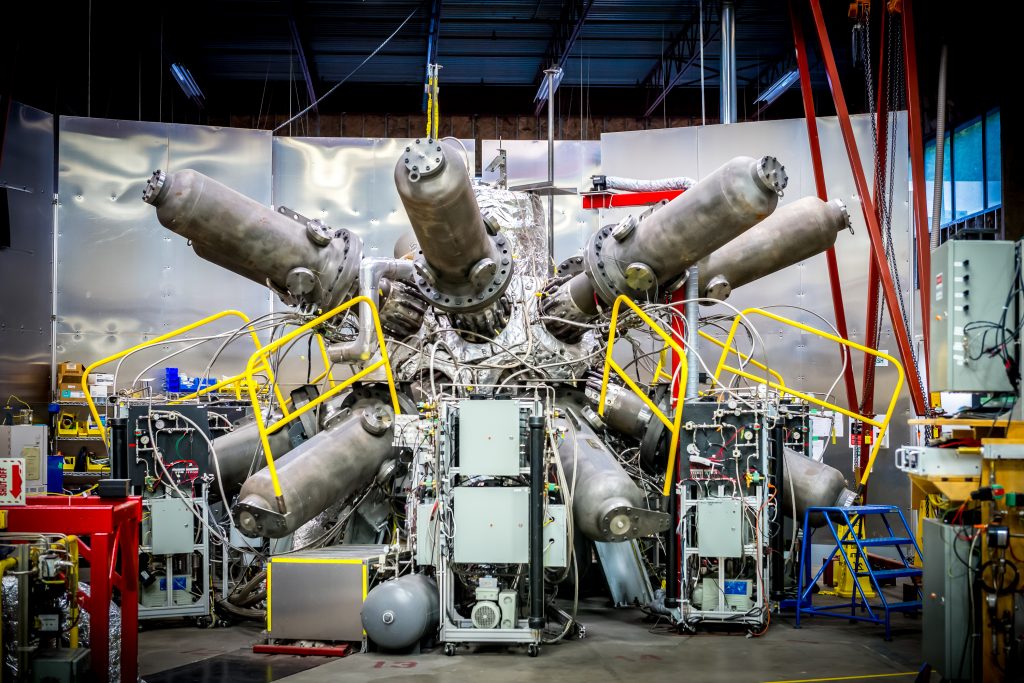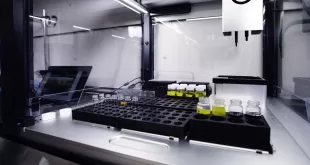General Fusion pushes commercialized fusion energy forward
Once the stuff of science fiction, nuclear fusion is entering the everyday. Its promise of clean, cheap, abundant energy is a rallying cry for innovators like Canada’s General Fusion, which is one of seven fusion labs listed by the Canadian Nuclear Society and the second = largest privately run facility in North America. The company in Burnaby, B.C., has come a long way since its founding in 2002 and is making good on its goal to transform the world’s energy supply with what it says will be the fastest, most practical and cost-competitive path to commercial fusion power. Sparked by Dr. Michel Laberge, who completed proof-of-principle experiments in 2006, and supported by venture capital funds, the General Fusion team has grown to more than 70 employees, including 60 scientists and engineers from leading fusion research institutes like L’École Polytechnique in France, the UK’s Culham Centre for Fusion Technology, the Joint Institute for High Temperatures at the Russian Academy of Sciences, and Kyushu University in Japan.
In 2016, General Fusion played a central role in the release of a report that laid out a path for Canada as a major player in nuclear fusion. Fusion 2030 is a collaboration among universities, industry and researchers that addresses future energy needs, environmental protection and economic viability – while calling for a $125 million federal investment over the next five years. By the end of 2016, General Fusion had received over $100 million in funding from a global group of investors and the Government of Canada’s Sustainable Development Technology Canada (SDTC) fund.
The What/How/Why of Nuclear Fusion
Not to be confused with fission – the nuclear reaction used today in the five CANDU (Canadian deuterium-uranium) reactors in Ontario, Quebec and New Brunswick – nuclear fusion is the same process that powers the Sun. On paper, fusion seems simple enough: Smash the nuclei of two hydrogen atoms together with such force and speed to overcome their natural repulsion and allow the forces to fuse them into a helium nucleus. The weight of the helium nucleus is slightly less than the two hydrogen atoms, and that difference in weight is where this immense energy comes from.
It’s easier said than done. Let’s return to the Sun, nature’s own fusion lab: Deep at its core, where the pressure is 340 billion times greater than on Earth, 600 million tons of hydrogen are converted into helium every second. Add to that the heat needed to force the atoms together – in the Sun’s case, that’s 15 million degrees Celsius – and you have the perfect conditions for nuclear fusion to occur. These are the same conditions that advanced fusion labs like those at General Fusion have recreated.
But it has not been without challenges. Using a variety of means like lasers and super-magnets, in the last few decades scientists have been able to sustain fusion reactions for only seconds at a time – not enough to make it a viable source of energy. There’s also the matter of containing the immense heat required, and supplying the power necessary to fuse the atoms. But the payback for General Fusion, according to its CEO Christofer Mowry, is well worth it. The company is pushing forward with building a prototype nuclear power plant run on fusion that can deliver energy to an entire community, while demonstrating a practical approach to commercialization.
“It is an excellent solution to the problems of global climate change and long-term energy security. In addition, fusion energy research pushes the bounds of fundamental and applied research in areas ranging from plasma physics, to materials science, to high-performance computing, to power engineering, to name just a few areas,” Mowry notes in the company’s blog. “At General Fusion, we are perfecting a hybrid solution which seeks to combine the best of the high temperature steady-state and pulsed high-pressure fusion processes to unlock practical fusion energy, producing millisecond bursts of power that are easier to create and manage.”

A Priceless Prototype
General Fusion’s power plant prototype conjures a futuristic, almost alien world with its massive metal sphere studded with hundreds of powerful pistons. Its magnetized target fusion system has three main components: a plasma injector, which supplies the fuel; an array of pistons, to compress the fuel; and a chamber of spinning liquid metal, to hold the fuel and capture the energy. Driven by steam, the pistons push on the liquid metal liner, which in turn compresses plasma of superhot hydrogen gas inside, creating conditions for fusion. General Fusion’s Chief Technology Officer Michael Delage explains that “underneath the pragmatically industrial exterior are cutting-edge electronics that give these pistons an incredible level of control.”
To create fusion with this system, the plasma needs to be kept the right shape while compressing it. That means precisely controlling when each piston will push down on the liquid metal, a molten lead-lithium. “By developing high-speed control electronics that synchronize the position of the pistons during compression, General Fusion has achieved the level of precision required to hold the
plasma stable,” Delage says.
Using these electronics, General Fusion has achieved piston timing that can simultaneously compress and heat the plasma. The plasma in turn heats the metal in the liner, and then the hot metal liquid is sent to a heat exchanger which generates electricity via a steam turbine. And it’s all clean energy.
Guided by advanced computer simulation, General Fusion is developing and optimizing each of these components as it prepares to build a demonstration fusion power plant. Since the prototype will ring in at several hundred million dollars, a number of existing funders, like Jeff Bezos as well as the Canadian and Malaysian governments, are expected to step up to bat. General Fusion is funded by several other investors, among them Cleantech, Cenovus Energy and Microsoft, with whom it partnered to apply artificial intelligence in a bid to accelerate fusion energy.
Last October, the Canadian government announced a $49.3-million investment in General Fusion for the large-scale prototype plant, an investment that couldn’t come soon enough as the world grapples with a power-hungry population.
 BioLab Business Magazine Together, we reach farther into the Canadian Science community
BioLab Business Magazine Together, we reach farther into the Canadian Science community





